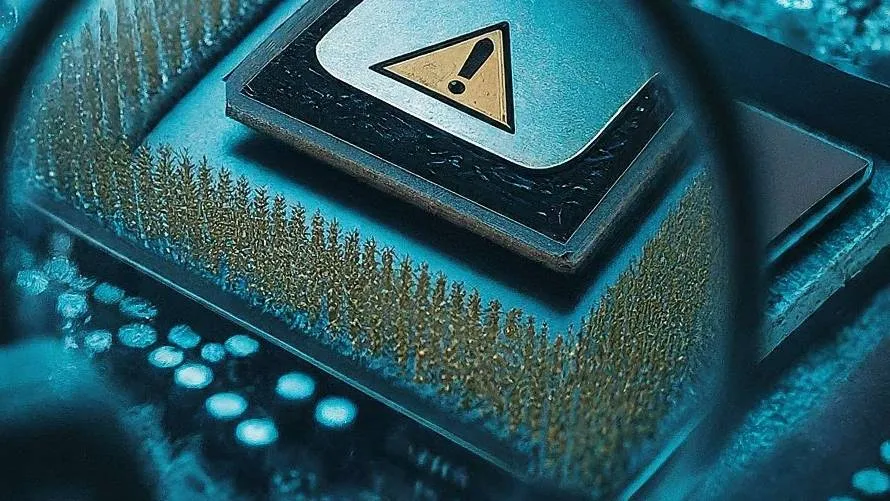
Security Alert: Computer Scientists Uncover Dangerous New Attacks on Intel, AMD Chips
A team of Computer Scientists, led by experts from the
University of California San Diego, has made a major discovery that
could help protect billions of devices from sophisticated cyberattacks.
Through dedicated research supported by various government and industry
partners, the scientists were able to uncover two highly complex hacking
techniques that could potentially provide attackers backdoor access to
powerful computer processors.
These microchips, which are manufactured by industry leaders like Intel and AMD, are commonly found powering everything from laptops and desktops to servers and appliances. By identifying vulnerabilities in the processors' inner workings, the research team shed light on new types of "Spectre-style" attacks that are far more advanced and precise than what security experts had seen before.
If left unaddressed, the attacks could allow bad actors to infiltrate devices and steal sensitive user information almost undetectably. "With enough refinement, an attacker may even be able to spy on users by harvesting data as they type or access confidential files," explained graduate student Hosein Yavarzadeh, who played a central role in the study.
Luckily, the scientists promptly shared their findings with the impacted technology companies. Intel and AMD can now work on issuing firmware and software patches to strengthen protections against these new attack vectors in consumer hardware. Through their diligent work, the researchers helped raise awareness of looming threats on the horizon, empowering industry to stay one step ahead of increasingly sophisticated hackers.
What are some examples of the vulnerabilities in the processors' inner workings that the research team discovered?
Unfortunately, the original text did not provide any technical details about the specific vulnerabilities discovered in the processors' inner workings. As it was a high-level overview intended for a general audience, the research findings were only described at an abstract level. Some possibilities for what kinds of vulnerabilities the team could have uncovered based on the context include:
- Side-channel attacks that could leakage secrets like cryptographic keys by analyzing subtle patterns in the processor's power consumption, timing, or electromagnetic emissions.
- Issues related to speculative execution or cached memory that could allow sensitive data to be inadvertently exposed through microarchitectural data sampling (MDS) flaws similar to Spectre and Meltdown.
- Bugs/backdoors in the processors' instruction decoder, branch predictor, cache subsystem or other microcode that could be exploited to redirect execution for malicious ends.
- Fault injection attacks abusing errors or edge cases in the processor's logic to induce bit flips or code execution on buffers containing restricted data.
- Covert channels in address translation/permission mechanisms that could let an unprivileged process read or write to places in should not have access to.
However, without more technical details provided in the original article, we can only speculate on the nature of vulnerabilities uncovered by the researchers. The specifics were likely kept confidential to avoid inadvertent dissemination of exploits before mitigations were developed.
What are some common techniques used to mitigate side-channel attacks in processors?
Here are some common techniques used to mitigate side-channel attacks in processors:
- Noise injection - Adding random/fake operations, delaying branches, randomizing memory access patterns to mask actual computations.
- Access control - Restricting ability of unprivileged processes to monitor cache usage, performance counters, timestamps that could reveal secrets.
- Encrypted memory - Storing secrets in encrypted form that requires key to decode, preventing leakage via cache/memory analysis.
- Registers isolation - Partitioning registers to isolate cryptographic keys/secrets from other processes that could measure contents indirectly.
- Cache partitioning - Restricting cache sharing between security domains to prevent cross-domain attacks.
- Constant-time programming - Eliminating data-dependent control/memory flows to thwart timing/power analysis attacks.
- Address space layout randomization - Randomizing position of memory objects like libraries to defeat leakage via code/data placement.
- Multi-key encryption - Using fresh keys for each operation that are never present together, limiting value of leaked secrets.
- Instruction masking - Blending dummy instructions that decrease signal-to-noise ratio in side channels.
The goal with these techniques is to eliminate distinguishable patterns in system properties that could reveal confidential data.
